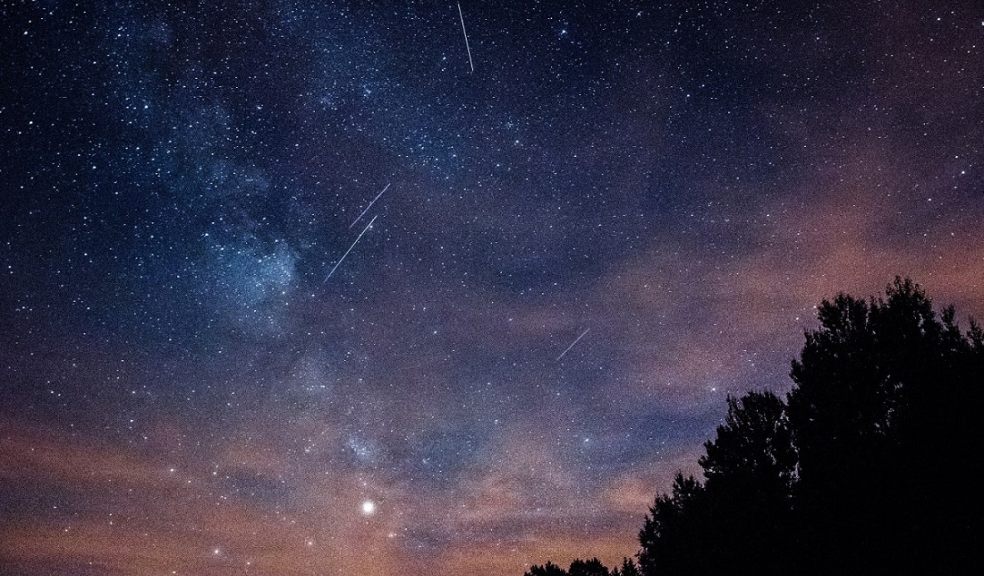
A Celestial Spectacle: How and Where to Watch the Perseids Meteor Shower
Each year, the Perseids meteor shower graces our night skies as the Earth passes through the debris left behind by the Swift-Tuttle comet. As we approach the peak of this celestial event, we've gathered advice from Neill Sanders, an amateur astronomer enthusiast and founder of Go Stargazing, and Jo Richardson, a Fellow of the Royal Astronomical Society and founder of Space Detectives.
Where?
To observe the Perseids meteor shower, it's crucial to find a suitable location away from bright city lights and light pollution.
Neill Sanders says: "The best place to see the Perseids meteor shower is any location with clear, uninterrupted views of the skies away from trees and tall buildings." He emphasizes that travelling to a dark sky site is worthwhile this year as the peak coincides with the new Moon, ensuring low ambient light levels.
Jo Richardson advises: “Head out somewhere dark. Exmoor National Park Dark Sky Reserve is ideal, as light pollution levels are strictly controlled here. This enables us to be home to some of the best dark skies available within the Southwest.”
Exmoor National Park has been designated an International Dark Sky Reserve since 2011. There are a few spots known to be especially good for taking in the night sky including Malmsmead, Luccombe, Wooten Courtenay and Bampton.
When?
To have the best chance of seeing the Perseids, you want to go out at the peak of the shower, and while the sky is at its darkest.
“The best time to view the meteor shower is at its peak in the early hours of 13th August, around 2 am” suggests Neill, “at this time, the Earth rotates into the vast dust cloud left over by comet Swift-Tuttle. These tiny dust fragments enter Earth's atmosphere and disintegrate, their mass converted into heat and light energy which causes them to appear as streaks across the sky.
“If you can't stay up that late, don't worry; shooting stars should start becoming visible as soon as darkness falls, and it's also worth looking out a few nights before and after the peak.”
Top tips?
Now that you know where and when to view the Perseids, what else should you keep in mind to help you maximise your chances of seeing as many meteors as possible?
Jo, who is also one of the current 6 ESERO-UK Space Champions, says: “Allow your eyes to night adapt so you can see the fainter meteors. This process can take 15 minutes to build up and then 5 seconds to destroy. So no looking at phones! If you must use a torch, make sure it is red light, as this will not affect your night vision.
“Take a picnic rug or reclining chair and lie back looking up at the sky. Try to survey the whole sky and not just in the region of Perseus. Take a hot drink and snacks, plus warm clothing. Even though it is Summer, it can still get chilly on those dark, clear nights.”
Neill says: “The Perseids meteor shower is named after the constellation of Perseus, as it is from this part of the sky that they appear to radiate. However, rather than looking at any specific part of the sky, the best way to view meteor showers is to look up and scan as much of the sky as you can with your peripheral vision. When you see a shooting star out of the corner of your eye, your view will naturally be drawn towards it.”
Experience the Perseids with The Best of Exmoor
If you're seeking the perfect stargazing getaway, look no further than Exmoor National Park. Recognised as an International Dark Sky Reserve since 2011, Exmoor offers breathtaking views of the night sky. The Best of Exmoor provides a selection of holiday cottages in areas with minimal light pollution, allowing you to fully immerse yourself in the Perseids meteor shower. As a special treat, use the voucher code 'stargazing' to enjoy a discount on your stay with The Best of Exmoor and make your Perseids experience unforgettable.
For more information visit www.thebestofexmoor.co.uk














